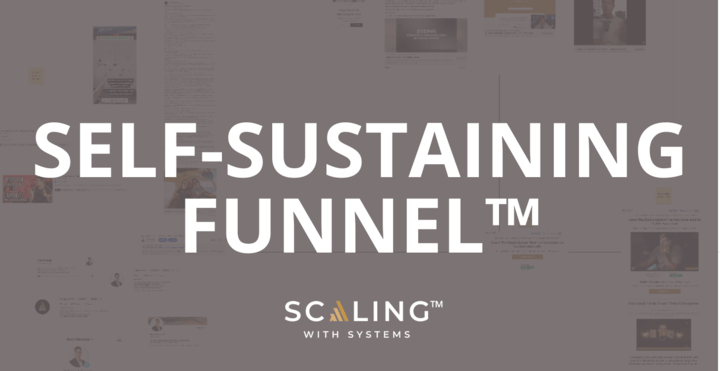Imagine if you could see every Facebook ad running right now. Imagine the revenue, ideas, and data you could generate.
What if you could spy on competitors Facebook ads?
You can! The Facebook Ad Library allows you to find the details of Facebook ads from your competitors and view any currently live ads in its ecosystem.
With a staggering 2.91 billion people active on Facebook and an absurdly competitive CPC of $0.43, Facebook is one of the best online advertising platforms.
However, high-performing ads are challenging to create due to their complexity and require a lot of testing to determine what your audience likes. Analyzing your competitors ads on Facebook is a great way to determine what strategies top brands use to succeed.
There are many businesses out there that have invested resources into identifying the best-performing ads for your industry. Leverage their work by examining your competitors Facebook ads and building upon the insights to create a winning ad strategy.
In this guide, you will learn how to spy on competitors Facebook ads through Facebook ad competitor analysis. That’ll help build more successful ads for your campaign.
Facebook Ads: Overview
Facebook advertising isn’t dead. Even with new players entering the social media advertising platforms, knowing how to use Facebook ads manager to run ads remains an essential skill for most marketers.
Users are usually targeted with Facebook ads based on:
- Population demographics
- Geographic location
- Hobbies and interests
- Profile information
Advertising budgets are set and bids are placed for each click or thousand impressions.
The Facebook Ad Library was created in 2019 as a direct response to the Facebook political ad controversy in 2016. Facebook decided to make all active ads on its platforms accessible to everyone (even those without Facebook accounts) to improve transparency.
The library contains all Facebook and Instagram ads and inactive political and issue ads (up to 7 years old). It is a great way to check competitor Facebook ads and incorporate their viral framework.
Types of Facebook Ads for Social Media Campaigns
- Image and video ads
A single image can be used in multiple ad types, placements, and aspect ratios for an Image ad.
If you use high-quality photos, you can effectively showcase your product or service with image ads. This ad format is great for growing brand awareness or promoting a sale, no matter what stage of your funnel you’re at.
A Video ad displays a single video to advertise a product or service.
Video advertising drives high audience engagement. Companies of all sizes can analyze their competitor’s Facebook Ads to produce entertaining and engaging videos.
- Carousel and slideshow ads
Readers can flip through a carousel of images or videos with their headlines, description, and link. Each image can have its own landing page so that you can introduce readers to a wide range of your products.
Slideshow ads are a great format to offer users an immersive experience through 3-10 images that play in a slideshow.
It can also be a great tool for those with no video-making experience who want to attract readers’ attention with movement and sound.
- Stories and Instant Experience Ads
A Stories ad is an immersive full-screen experience displayed between users’ Stories on Facebook, Instagram, Messenger, or WhatsApp. Stories can be made with videos, images, or carousels.
With Instant Experience ads, your target audience can swipe through several images at a time, tilt the screen differently, and zoom in or out with the touch of their finger. Plus, these ads load 10x faster than regular mobile web applications!
- Collection Ads
A Collection ad is similar to a mobile window-shopping experience in which your product lineup can be scrolled through in one tap.
A Collection ad is similar to a carousel ad, except that Collection ads are more customizable and full-screen. If you sell only a few products or services, collection ads are a better option.
- Lead Ads
With a Lead ad, you can collect valuable information about potential customers through an Instant Form.
Lead ads can help you collect contact information for future promotions, conduct market research on your target audience, or engage your audience.
- Messenger Ads
A messenger ad appears in the main tab of Facebook messenger, where people talk with their friends.
When users see your ad in their inbox, they can click on it to start a Facebook conversation.
Elements of a Killer Facebook Ad
1. Body Text
This is the copy that appears right above the image. It is common for brands to write 1-2 lines of text, while others may write several paragraphs.
Although there is no right or wrong answer, doing A/B testing is the best way to determine whether a short or long copy is more effective. You can clarify your message here.
Translate their needs into simple, actionable language and use hooks and emotive words to grab your prospect’s attention.
2. Images
Humans process visual content faster than text, so choosing the right Facebook ad image is crucial. How do you choose images that make an impact? These guidelines can help you choose:
- Ask yourself: Who is your target audience? What do they desire or fear? What are their objectives?
- Choose an image that conveys the main message of your Facebook ad. It should bring more attention to your offer.
- A grainy, blurry, and generally poor-quality image is very discouraging. For the best image size, Facebook recommends 1200 x 628 pixels.
3. Headline
A good headline draws people’s attention to the rest of the content. Using an active voice or sparking a sense of urgency are good methods for writing ad headlines, but keep them concise.
You can take this a step further by analyzing your Facebook competitor ads and incorporating their viral headlines to boost your conversion rate.
4. Description
You will find this Facebook ad tool just under the headline. You can elaborate on your headline here. While some brands disclose the price of a product here, others explain its features and benefits. Plus, your description should convince people to click the CTA button.
- Call-to-action button
By clicking the CTA button, people are taken to the next step in the sales funnel (whether that is going to a landing page or booking a call). Facebook offers a variety of call-to-action (CTA) button options, including Buy Now, Subscribe, Make A Booking, Contact Us, and more.
If you’re not sure which CTA will get you maximum conversions, check competitor Facebook ads for inspiration (we explain more about this below).
Facebook Tool: The Ad Library
The Facebook Ad Library is a free, public database of all Facebook, Messenger, and Instagram ads. Every detail of the ads can be viewed, including the copy, the image, the launch date, and any A/B testing.
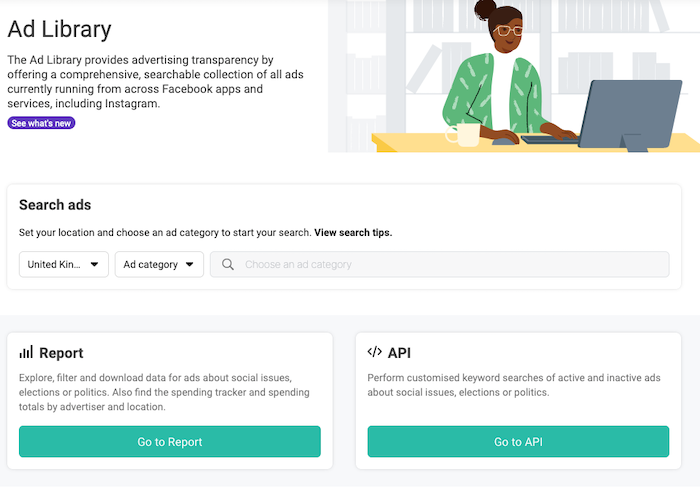
Facebook Ad Library: How Can I Get Started?
Click the drop-down menu and search for the relevant brand name.
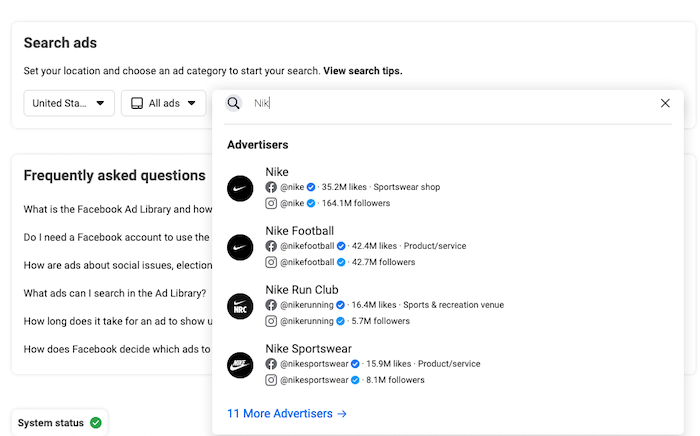
Now, you’ll see a page that displays information about the advertiser, including when the ad was created, how many ads are running, and the location of their moderators.
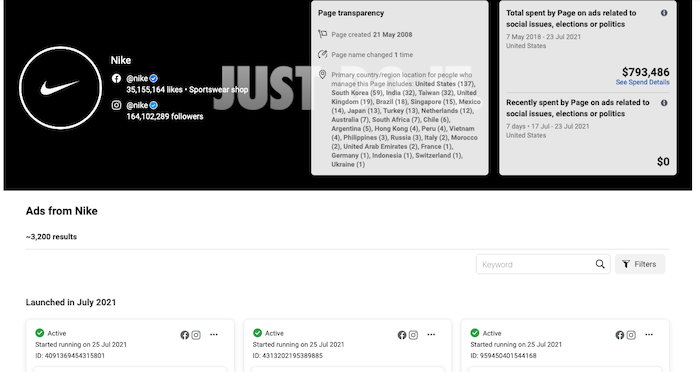
To see ads in a grid, scroll down a little further. To find out more about a particular ad, click “See Ad Details.”
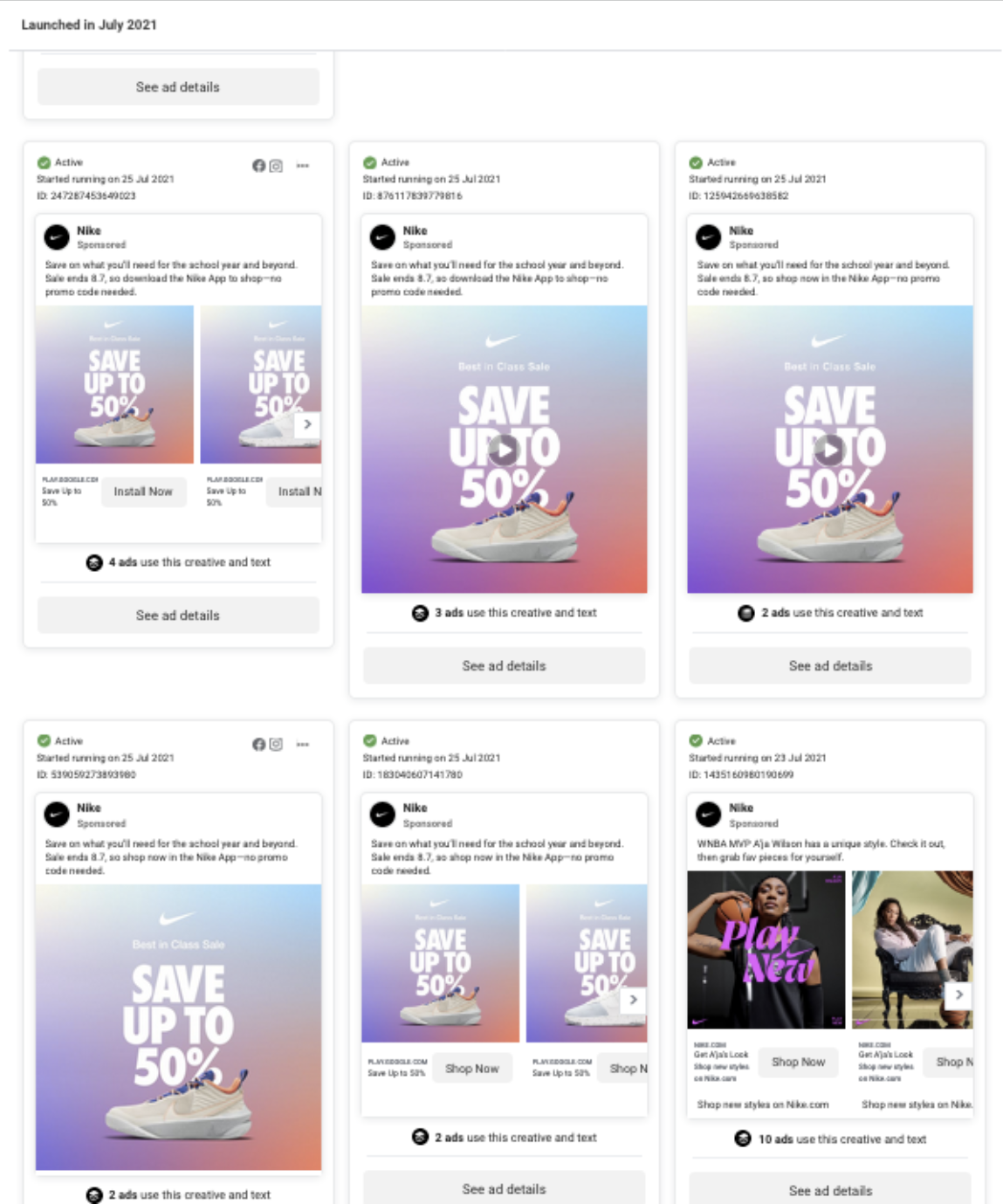
How To Create Facebook Ads From Scratch?
1. Create an account with Facebook Ads Manager
Facebook Ads Manager requires a Facebook Business Page. Ads cannot be run through personal profiles.
Next, follow these steps:
- Click here to go to Meta Business Manager.
- Click on “Go to Ads Manager.”
- On the ad account setup page, confirm your information.
- Decide how you want to pay.
- Save your changes.
With Facebook Ads Manager, all of your ads can be managed from one place.
2. Create an ad through Facebook Ads Manager
Logging into the meta business manager, you’ll see a performance dashboard listing all of your campaigns, ad sets, and individual ads, along with the results they’ve generated.
This dashboard will be empty unless you’ve already created an ad. Create a new campaign, ad set, or ad in Facebook Ads Manager by selecting the ad type.
On the far left of these ad types, click the green “Create” button.

3. Choose your objective
You can choose from 11 different objectives. Everything from general brand awareness to app installs to increasing traffic to your online store is on the list.
Choosing an objective allows Facebook to determine which ad options are most suitable for you based on your needs.
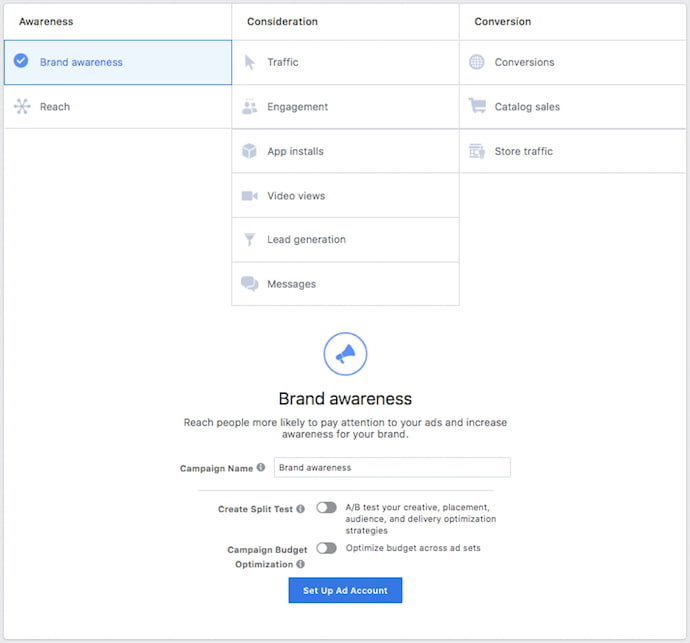
4. Select your target audience
When you first start out with Facebook advertising, you’ll probably have to experiment with several different targeting options before reaching the perfect audience.
You can narrow your focus by using Facebook’s audience definition gauge. Located to the right of the audience targeting fields, this tool calculates a potential reach number based on your selected properties.
To drive traffic, you’ll probably want to target the type of people who will be most interested in what you offer.
You can, however, target a more general audience if you’re trying to build brand awareness.
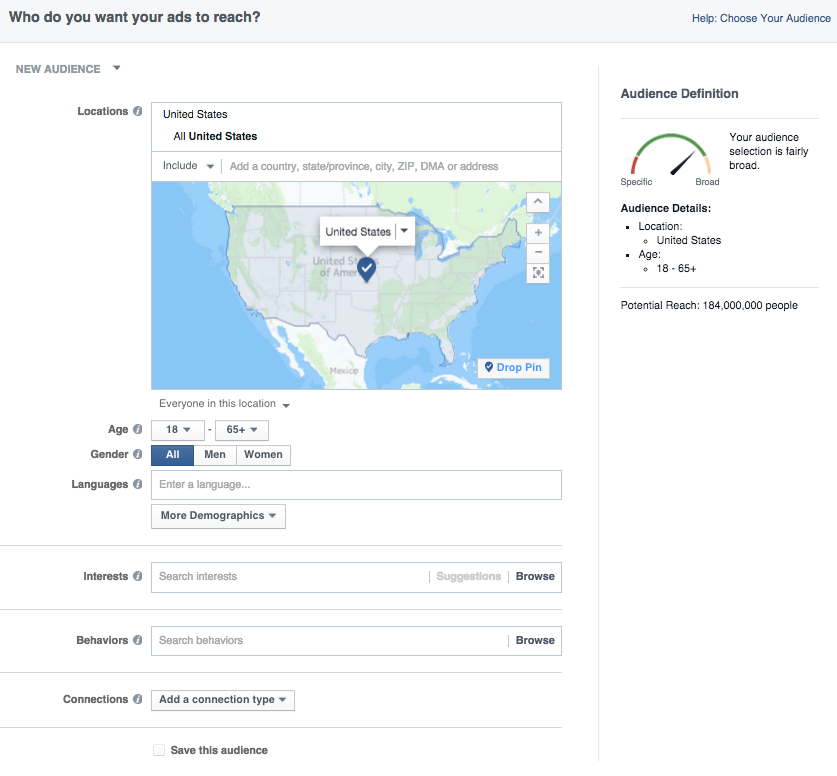
5. Decide your budget
You can set a Facebook budget either daily or lifetime. Here’s how they differ:
- Daily budget: For an ad set that runs continuously throughout the day. By setting a daily budget, Facebook will pace your spending. For an ad set, the daily budget must be at least 2x your CPC and the minimum is $1.00.
- Lifetime budget: If you’d like to run your ad for a specific period, select lifetime budget. The ad will run on Facebook over the period you set.
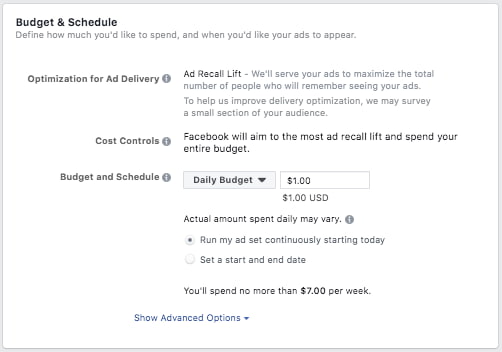
Scheduling
Select whether the campaign should run immediately and continuously or if you would like to customize the start and end dates. Alternatively, you can limit the hours and days during which your ads run.
6. Publish your ad
If you want to increase website traffic, Facebook Ads Manager recommends Clicks to Website ads.
Links and Carousels are two different ad formats. You can choose between a single-image ad (Links) or a multi-image ad (Carousel) with three to five scrolling images for no extra charge.
Here is an example of a Links ad.
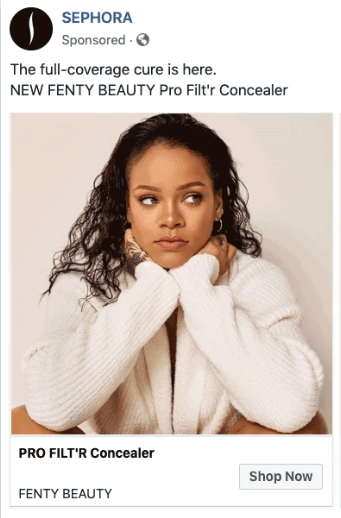
This is an example of a Carousel ad.
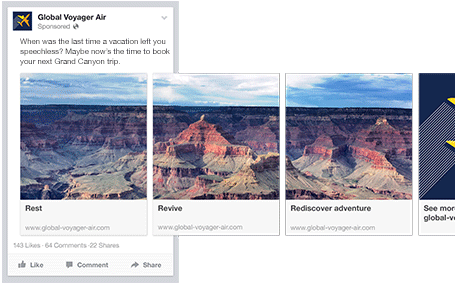
After choosing between the two, upload your creative assets. Facebook requires certain design criteria for each type of ad.
You’ll be prompted to choose how you’d like your ad to appear after choosing an ad type. You have three options: Desktop News Feed, Mobile News Feed, or Desktop Right Column.
How To Know What Your Competitor Is Advertising?
1. Filter Impressions
How to spy competitors Facebook ads through filtering impressions?
Filtering ads by impressions is one of the best meta business tools. First impressions on Facebook are defined as the number of times an ad appears on the screen.
To view impressions, enter the name of the company or organization in the search bar and then select the Facebook page when it appears.
Next, click Filter by Impressions and sort by High to Low. Based on the filters you enabled, a list of active ads will display.
2. Media Type
In the Facebook Ad Library, you can find out what types of media your competitors use in their ads. You can choose from a variety of formats when setting up Facebook ads, including photos, videos, stories, carousels, slideshows, and collections.
3. Examine Messages
Look closely at your competitor’s Facebook ads to see what headlines they use, what value props they offer, and what pain points they address.
Understand how your competitors position themselves and their products, and how they promise to reach their customers.
4. Duration of Ads
The Facebook Ad Library can be used to filter and view the longest-running ads back as far as 90 days. Facebook ads that have been running for more than 30 days are probably performing well for your competitors if they’re still active.
5. Consider Trends
Seeing trends and similar ads across multiple competitors gives you insight on what may be worth testing for your own business.
Check competitor Facebook ads during holidays, seasons, or specific days of the year when your customers are most active. You can then implement what you’ve learned into your brand and see how your audience responds.
Why Spy On Facebook Competitor Ads?
It’s simple: It gives you an edge over what your competitors are doing that works and doesn’t work, among other reasons.
By doing a Facebook ad competitor analysis, you can avoid the same mistakes they did entirely. It’s like learning how to create a social media campaign the right way so you don’t waste company time and money.
When you find competitors Facebook ads, you can easily determine what your target audience is responding to. Implement specific types of content into your marketing strategy if they respond to them more than others.
You can target your ads appropriately in the ad campaign section when it comes to your target audience. Your ads will not be seen by the right people if you don’t know who your target audience is.
Example Case: Tom Ferry Ads
Let’s assume we’re looking for ‘Real Estate Investing Influencers’ to run an analysis on Facebook competitor ads for Real Estate Investors.
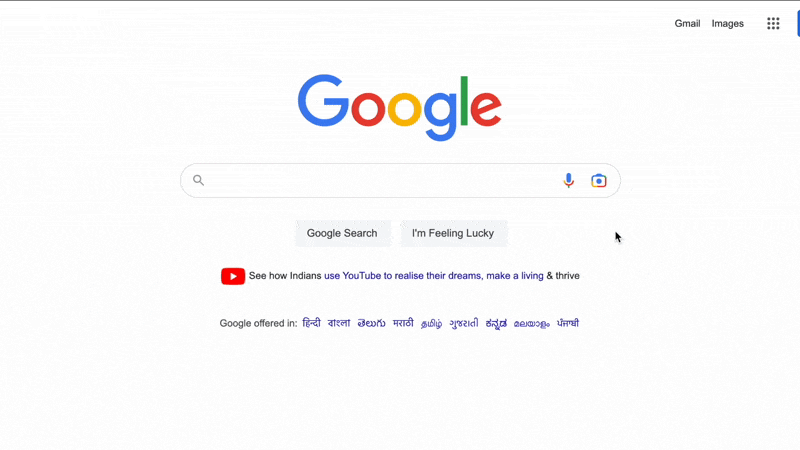
Tom Ferry shows up as one of the many competitors in this industry. Let’s learn how to spy on your competitors Facebook ads in a step-by-step tutorial.
Go to Facebook Ads Library here.
Select your location and Ad Type. You can search ads based on specific locations.
For example – If you’re a real estate investor in Arizona, you can set the location to ‘Arizona’ to find competitor ads on Facebook in your local area.
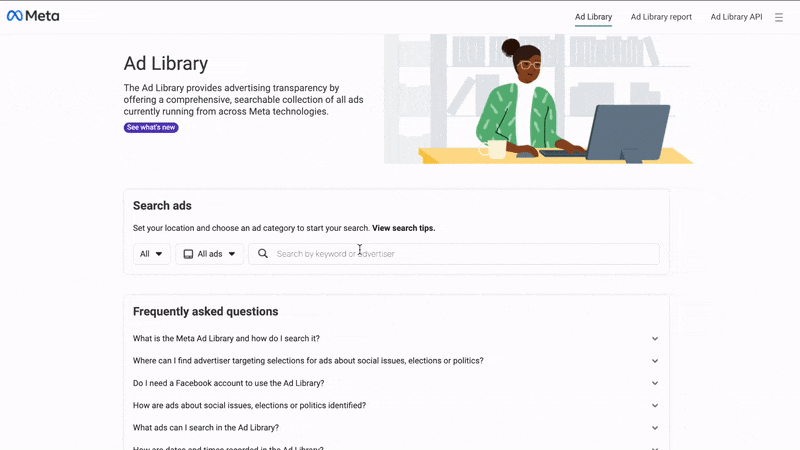
Once you find your competitor, select their profile, and here are the results:
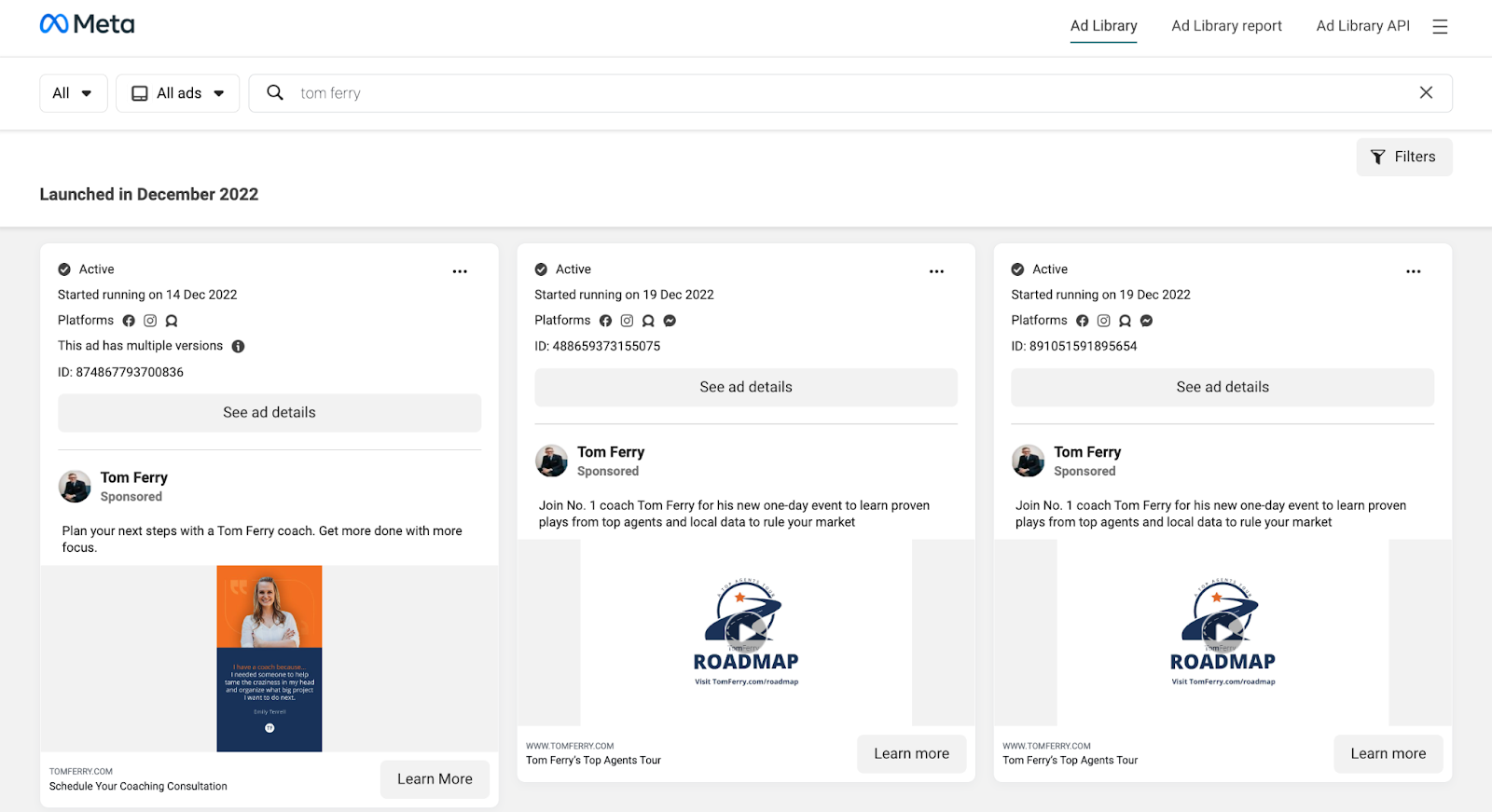
The image above shows all the ads that Tom Ferry has been running in December 2022.
Scroll down to see more of his active ads.
Find ads that have been running for a while. This ensures that Tom’s making a higher ROI because those ads are working.
Once you run a Facebook ad competitor analysis, write similar copy, creatives, and images to maximize results without investing as much resources into the research.
How To Spy On Your Competitors Facebook Ads: FAQs
Does the Facebook ad library show all ads?
The Facebook ad Library contains all active ads running across the Meta business suite. Transparency is a priority as it prevents interference in elections. The Ad Library offers additional information about ads about social issues, elections or politics, including spend, reach and funding entities.
What is forbidden in Facebook ads?
Illegal products, tobacco, drugs, unsafe supplements, weapons and ammunition, payday loans, penny auctions, and prohibited financial products. Also, misinformation (Facebook prohibits ads that contain false claims).
How does the Facebook ad library work?
The Ad Library is a place where you can search for ads that are running across the Meta business suite. You can use it to get information about the ads you see. For all ads, you can search for ads that are currently active on Meta Products.
Can I withdraw my Facebook ads balance?
Once you add funds to your prepaid balance, it won’t expire and you won’t be able to withdraw it. Facebook will deliver any active ads based on the budget you’ve chosen until your balance is used up. If you close your account while you still have an active balance, any leftover funds are non-refundable, except required by law.
Wrapping Up: Find Competitors Facebook Ads
When Facebook made ads available for everyone to see, advertisers weren’t happy, but you should be! You can upgrade your ad creatives, nail down your copy, and boost conversion rates with the Facebook Ad Library.
Of course, tailor the ads to your business and audience. But know that leveraging the information that is already out there can be a huge help in your business.
Need some help scaling your business to new heights? At Scaling With Systems, our mission is to help individuals, teams, and businesses grow and expand through a profitable client acquisition strategy. Book a free consultation call with us today to learn how we can help you.


